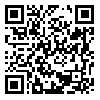Volume 9, Issue 2 (volume9, Issue 2 2021)
JCP 2021, 9(2): 55-62 |
Back to browse issues page
Download citation:
BibTeX | RIS | EndNote | Medlars | ProCite | Reference Manager | RefWorks
Send citation to:



BibTeX | RIS | EndNote | Medlars | ProCite | Reference Manager | RefWorks
Send citation to:
Matoori H. Vertical and horizontal mental timeline in Persian Speakers. JCP 2021; 9 (2) :55-62
URL: http://jcp.khu.ac.ir/article-1-3199-en.html
URL: http://jcp.khu.ac.ir/article-1-3199-en.html
Department of English Language , Khorramshahr International Branch, Islamic Azad University , hsn_matoori@yahoo.com
Abstract: (2521 Views)
| In this research, the horizontal and vertical direction of the time line in the minds of Persian speakers is examined from the perspective of Lakoff and Johnson conceptual metaphors. The mental timeline as an abstract concept according to our cognitive experiences and embodied mind may be conceptualized metaphorically under the influence of concrete concepts of space in our mind. In this research, a type of experimental experiment in the form of arranging colored cubes of time is used in different dimensions and possible directions in the concepts of the days of the week, including Saturday, Sunday, and Monday; the three main meals that include breakfast, lunch and dinner; and the concept of time that includes the yesterday, today and tomorrow. A total of 45 male and female employees between the age of 27 and 45 from the Islamic Azad University of Khorramshahr-Persian Gulf International Branch participated in this experiment. Percentage and average frequency of sorting colored cubes in the three concepts of time showed that, respectively, the horizontal lateral axes from right to left are adopted from the writing direction of Persian language with 45.6% as the first; the horizontal axis of the back-front paradigm is taken from the walking and looking direction, and linguistic metaphors, with 25.7% as the second; and the horizontal axis left to right taken from the writing direction of numbers and mathematics with 14.6% are considered as the third adopted sources of abstract concepts of time in Persian. The results show that in the minds of Persian speakers, the cognitive experience for writing the language due to repetition and sensory-motor experience is still represented as the most dominant pattern, and after this pattern walking and looking forward has a considerable affects on the representation of the direction of mental timeline. |
Type of Study: Research |
Subject:
General
Received: 2020/01/7 | Accepted: 2021/09/4 | Published: 2021/09/4
Received: 2020/01/7 | Accepted: 2021/09/4 | Published: 2021/09/4
Send email to the article author
| Rights and permissions | |
 |
This work is licensed under a Creative Commons Attribution-NonCommercial 4.0 International License. |






